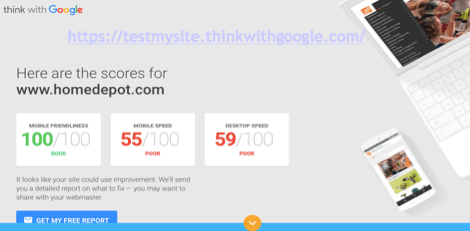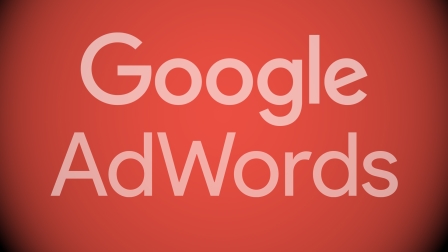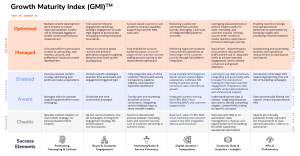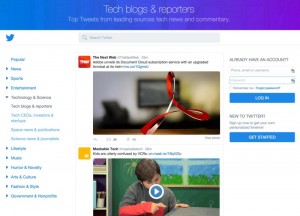Wondering how to write great ads that convert in the age of expanded text ads? Columnist Mona Elesseily shares her tips and observations.

Expanded text ads (ETAs) in AdWords are here, and we’ve had some real success with them thus far. In this article, I’ll talk about what we’ve seen in testing and what is working for us with ETAs. I’ll also cover some pointers on elements you can include to make ads more effective and compelling to online searchers.
Note: Advertisers will no longer by able to create or edit standard text ads as of January 31, 2017, meaning that you should be fully transitioned to expanded text ads by then. It’s not too late, and there’s time to get things sorted.
Expanded text ads — what’s been working
We’ve done a fair bit of testing, and we’ve determined a few major takeaways in our initial ETA tests:
1. Longer text ads convert better
We didn’t take Google’s word for it, so we’ve been testing shorter copy (using standard text ads) vs. longer copy (using the ETA format), and the longer copy has been converting better. My theory is that longer copy is causing people to actually read online ads; previously, people would briefly glance at ad headlines and URLs before clicking and going to landing pages.
Our goal as advertisers is to get people to landing pages so that they can make a decision to engage further (and ultimately buy a product/service). With ETAs, we’re able to provide more information in ads, and it seems that this ad copy is factoring more into buying decisions.
2. Longer text ads = better mobile conversions
One of the many ways I’ve been using ETAs is as a workaround to the poorly performing mobile-only ad format. I paused the mobile-only ads and ran with ETAs (which were appearing on mobile devices).
The result? I observed these expanded text ads perform 30 percent better on mobile than standard, mobile-only text ads.
3. Wording counts
We’ve found that people like to “shop” as opposed to “buy” or “get.” Though ETAs give you more characters to work with, you should still think carefully about the words you use in your ads.
Other ad copy considerations
Now more than ever, the elements you choose to include in ads are very important. It’s not just a matter of filling up space but trying to figure out what your customers want and finding a compelling way to tell them. It’s also important to have ads that stand out.
Think carefully about the elements you’re going to include in your ads. The following factors tend to move the needle in ads, so test them out!
1. Pricing
People are motivated to shop online by price. Both showrooming (browsing in store, then purchasing online at a lower price) and webrooming (researching online, then purchasing in a store) have become very popular, and each must be considered when mapping out retail strategies.
Compare your pricing to that of your online and offline competitors, then write ad copy targeting price-sensitive shoppers.
2. Discounts
Discounts are very popular as well. Test both percentage-off and dollar-amounts-off discounts in your ad copy to see where you get the best traction.
Remember, don’t be blinded by what you think will work. Test and see.
3. Shipping offers
Consider a shipping offer that is equivalent to the discount offer you’re considering. In my experience, shipping offers convert better than discount offers.
Free shipping, or free shipping over X amount spent, is always compelling. Don’t raise prices to offer free shipping, as people are more price-sensitive than shipping offer-sensitive.
4. Variety of items in stock
People like to select from a variety of products, so try wording like “huge selection” with more generic keywords like “dresses” or “sneakers.” If possible, you might also consider ad copy that speaks to your current inventory, like “in stock and ready to ship.”
5. Testimonials
These are powerful. They can be effectively incorporated into ads with seller ratings and review extensions. (They can also be effectively incorporated on landing pages.)
6. Flexible returns
The ability to return products makes companies seem trustworthy. Here are some examples:
- 365-day return policy
- Hassle-free returns
- “Try & buy” wording
7. Brand reputation
Showing that you’ve been around for a while is powerful. You can do this with review extensions, seller ratings or wording like “in business since 1955.”
8. Loyalty program
Loyalty programs are important to many, so try mentioning yours in ads where appropriate, and see what kind of traction you get. I’ve seen increases of 20 percent in ads that mention loyalty programs.
Non-ad elements
Ads don’t stand alone! They work in conjunction with other site and page elements. Don’t forget the following:
1. Simple site navigation
Don’t underestimate the post-click experience. Why work hard to drive your traffic to a site that’s difficult to navigate? Keep it streamlined and intuitive.
2. Mobile-friendly web pages
Ensure that people are able to find products/services and surf mobile pages easily.
Site speed is an important ranking factor in general, and Google announced earlier this year that mobile site speed may soon impact your mobile rankings — so ensure that your mobile pages are up to snuff.
A good tool to test this is the Think With Google Site Speed Tool. Below is an example from Home Depot. In the example, Home Depot’s mobile site speed is considered poor at 55/100.

3. Friends and family discount
This is effective when sent by snail mail or email and amplified by paid social (or regular social) and paid search (if needed). These types of promotions tend to spread effectively by word of mouth.
4. Social media recommendations
Recommendations on social media are effective. Don’t forget to build up fan base and recommendations on social to corroborate what you’re saying in other online channels (including ads).
Remember: You have until January 31, 2017, to incorporate expanded text ads into your Google AdWords accounts. Good luck!
[Article on Search Engine Land.]
Some opinions expressed in this article may be those of a guest author and not necessarily Marketing Land. Staff authors are listed here.
Marketing Land – Internet Marketing News, Strategies & Tips
(67)






